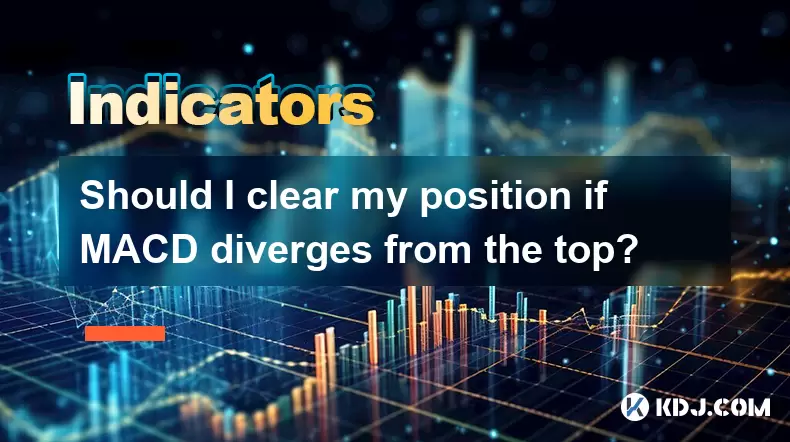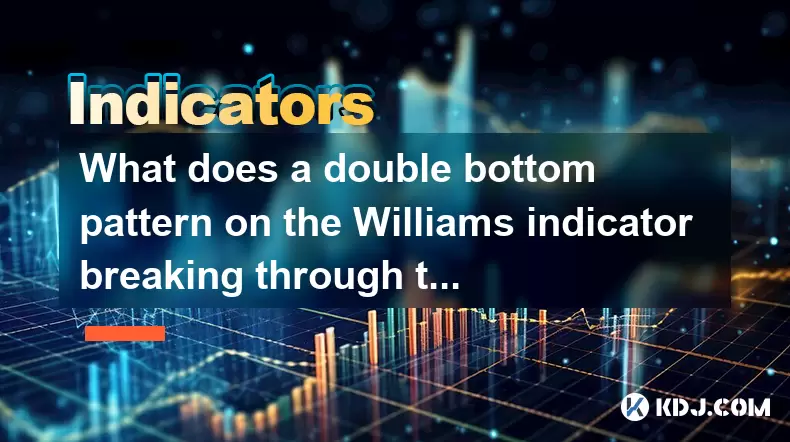-
 Bitcoin
Bitcoin $116400
-0.36% -
 Ethereum
Ethereum $4033
3.40% -
 XRP
XRP $3.302
-1.26% -
 Tether USDt
Tether USDt $1.000
-0.02% -
 BNB
BNB $796.1
1.67% -
 Solana
Solana $177.8
1.89% -
 USDC
USDC $0.9999
0.00% -
 Dogecoin
Dogecoin $0.2314
4.09% -
 TRON
TRON $0.3381
0.14% -
 Cardano
Cardano $0.7989
1.22% -
 Stellar
Stellar $0.4496
-1.84% -
 Chainlink
Chainlink $20.42
9.42% -
 Hyperliquid
Hyperliquid $41.17
0.88% -
 Sui
Sui $3.914
3.77% -
 Bitcoin Cash
Bitcoin Cash $584.7
1.52% -
 Hedera
Hedera $0.2632
-0.54% -
 Avalanche
Avalanche $24.09
3.40% -
 Ethena USDe
Ethena USDe $1.001
-0.02% -
 Litecoin
Litecoin $123.2
1.33% -
 Toncoin
Toncoin $3.318
-0.04% -
 UNUS SED LEO
UNUS SED LEO $8.984
-0.05% -
 Shiba Inu
Shiba Inu $0.00001323
2.85% -
 Uniswap
Uniswap $10.90
4.41% -
 Polkadot
Polkadot $3.999
3.34% -
 Dai
Dai $1.000
0.01% -
 Cronos
Cronos $0.1630
9.64% -
 Bitget Token
Bitget Token $4.484
0.82% -
 Monero
Monero $272.4
2.44% -
 Pepe
Pepe $0.00001173
6.03% -
 Aave
Aave $290.8
2.88%
Should I clear my position if MACD diverges from the top?
When the MACD shows bearish divergence, consider clearing your position to protect capital, especially if other indicators like RSI confirm a potential downturn.
Jun 02, 2025 at 08:57 pm

When trading cryptocurrencies, the MACD (Moving Average Convergence Divergence) indicator is a popular tool used by traders to identify potential trend reversals and momentum shifts. A divergence between the price action and the MACD can often signal that a change in the current trend may be imminent. If you notice the MACD diverging from the top, it's important to consider whether you should clear your position. Let's delve into this topic in detail.
Understanding MACD Divergence
MACD divergence occurs when the price of a cryptocurrency moves in one direction while the MACD indicator moves in the opposite direction. There are two types of MACD divergence: bullish and bearish. A bearish divergence happens when the price of the cryptocurrency makes a higher high, but the MACD makes a lower high. This can be a warning sign that the upward momentum is weakening, and a potential reversal to the downside might be on the horizon.
Identifying Bearish MACD Divergence
To identify a bearish MACD divergence, you should:
- Observe the price chart: Look for a situation where the price of the cryptocurrency reaches a new high.
- Check the MACD line: Simultaneously, check if the MACD line fails to reach a new high and instead forms a lower high.
- Confirm with the signal line: The MACD line should be crossing below the signal line, which can further confirm the bearish divergence.
Should You Clear Your Position?
When you spot a bearish MACD divergence, it's crucial to consider whether you should clear your position. Here are some factors to consider:
- Risk Tolerance: If you have a low risk tolerance, a bearish MACD divergence might be a signal to exit your position to protect your capital.
- Market Conditions: Evaluate the overall market conditions. If other indicators and market sentiment also suggest a potential downturn, it might be wise to clear your position.
- Timeframe: Consider the timeframe you are trading on. A bearish divergence on a shorter timeframe might not be as significant as one on a longer timeframe.
Steps to Clear Your Position
If you decide to clear your position after identifying a bearish MACD divergence, follow these steps:
- Review Your Strategy: Before making any moves, review your trading strategy and ensure that clearing your position aligns with your overall plan.
- Set a Stop-Loss: If you haven't already, set a stop-loss order to limit potential losses if the price moves against your expectations.
- Execute the Trade: Place a sell order to exit your position. Ensure you are using the appropriate order type (market, limit, etc.) based on your trading platform and strategy.
- Monitor the Market: After clearing your position, continue to monitor the market to see if your decision was correct and to plan your next move.
Using Other Indicators to Confirm
While MACD divergence can be a powerful signal, it's often beneficial to use other indicators to confirm your decision. Some additional indicators you might consider include:
- RSI (Relative Strength Index): If the RSI is also showing signs of overbought conditions, it can reinforce the bearish MACD divergence.
- Stochastic Oscillator: A bearish crossover in the stochastic oscillator can further confirm the potential for a downturn.
- Volume: A decrease in trading volume during the price highs can indicate weakening momentum, supporting the bearish divergence signal.
Potential False Signals
It's important to be aware that MACD divergence can sometimes lead to false signals. Not every bearish divergence will result in a significant price drop. Here are some tips to help you differentiate between genuine and false signals:
- Multiple Timeframes: Analyze the MACD divergence across multiple timeframes. A divergence that appears on both shorter and longer timeframes is generally more reliable.
- Price Action: Pay attention to the price action around the divergence. Strong support or resistance levels can sometimes counteract the effects of a divergence.
- Historical Data: Look at historical data to see how the cryptocurrency has reacted to similar divergences in the past.
Practical Example of Bearish MACD Divergence
Let's walk through a hypothetical example to illustrate how you might handle a bearish MACD divergence:
- Scenario: You are holding a long position in Bitcoin (BTC). The price of BTC recently reached a new high of $50,000, but you notice that the MACD line has formed a lower high at the same time.
- Analysis: You check other indicators like the RSI, which shows overbought conditions, and the volume, which is decreasing at the recent highs.
- Decision: Given the bearish MACD divergence and supporting indicators, you decide to clear your position.
- Action: You set a stop-loss at $49,000 and place a market order to sell your BTC at the current price of $49,500.
- Outcome: After selling, you continue to monitor the market and see that BTC indeed starts to decline, confirming your decision to clear your position was correct.
Frequently Asked Questions
Q1: Can MACD divergence be used for short-term trading?
A1: Yes, MACD divergence can be used for short-term trading. However, it's important to be aware that signals on shorter timeframes can be more prone to false positives. Always use additional indicators and consider the overall market context when trading on shorter timeframes.
Q2: How often should I check for MACD divergence?
A2: The frequency of checking for MACD divergence depends on your trading style. For day traders, checking every few hours or even more frequently might be necessary. For swing traders, checking daily or weekly charts could be sufficient. Adjust your monitoring frequency based on your trading strategy and timeframe.
Q3: Is it possible to use MACD divergence for entry signals as well?
A3: Yes, MACD divergence can be used for entry signals. A bullish divergence, where the price makes a lower low but the MACD makes a higher low, can indicate a potential reversal to the upside. This could be a signal to enter a long position. Always confirm with other indicators and market conditions before making a trade.
Q4: Can MACD divergence be used effectively in highly volatile markets?
A4: In highly volatile markets, MACD divergence can still be useful, but it's important to be cautious. Volatility can lead to more false signals, so it's crucial to use additional confirmation tools and be prepared for rapid price movements. Consider adjusting your stop-loss levels and position sizes to manage risk in volatile conditions.
Disclaimer:info@kdj.com
The information provided is not trading advice. kdj.com does not assume any responsibility for any investments made based on the information provided in this article. Cryptocurrencies are highly volatile and it is highly recommended that you invest with caution after thorough research!
If you believe that the content used on this website infringes your copyright, please contact us immediately (info@kdj.com) and we will delete it promptly.
- Decentralized Data: Taking the Driver's Seat in the Data Economy
- 2025-08-09 14:30:11
- Bitcoin vs. Gold: The Store-of-Value Showdown in the Digital Age
- 2025-08-09 14:30:11
- BlockDAG, Stellar, and Crypto Adoption: Navigating the Hype
- 2025-08-09 14:50:12
- Litecoin Price Surge: Riding the Wave of Institutional Interest and ETF Hopes
- 2025-08-09 14:50:12
- Chainlink's Wild Ride: Whales Are Still Loading Up on LINK!
- 2025-08-09 15:10:11
- Ruvi AI: Solana's New Challenger Dominating Token Sales with AI Innovation
- 2025-08-09 14:55:15
Related knowledge

What does it mean when the Triple Moving Average (TRIX) turns downward but the price doesn't fall?
Aug 09,2025 at 12:42pm
Understanding the Triple Moving Average (TRIX) IndicatorThe Triple Moving Average, commonly known as TRIX, is a momentum oscillator designed to filter...

What does it mean when the Williams' oscillator repeatedly hits bottoms but fails to rebound?
Aug 09,2025 at 09:28am
Understanding the Williams %R OscillatorThe Williams %R oscillator, developed by Larry Williams, is a momentum indicator used in technical analysis to...

What does it mean when the upper and lower Bollinger Bands narrow?
Aug 09,2025 at 03:00pm
Understanding Bollinger Bands in Cryptocurrency TradingBollinger Bands are a widely used technical analysis tool in the cryptocurrency market, develop...

What does it mean when the 5-day moving average crosses the 10-day moving average but the 20-day moving average remains upward?
Aug 09,2025 at 03:35pm
Understanding Moving Averages in Cryptocurrency TradingMoving averages are foundational tools in technical analysis, especially within the cryptocurre...

What does a rapid decline after the AR line breaks through the BR line in the ARBR indicator indicate?
Aug 09,2025 at 04:42pm
Understanding the ARBR Indicator ComponentsThe ARBR indicator is a technical analysis tool that combines two oscillators: the AR (Amplitude Ratio) and...

What does a double bottom pattern on the Williams indicator breaking through the 50-day midline indicate?
Aug 09,2025 at 10:56am
Understanding the Williams %R IndicatorThe Williams %R indicator, developed by Larry Williams, is a momentum oscillator that measures overbought and o...

What does it mean when the Triple Moving Average (TRIX) turns downward but the price doesn't fall?
Aug 09,2025 at 12:42pm
Understanding the Triple Moving Average (TRIX) IndicatorThe Triple Moving Average, commonly known as TRIX, is a momentum oscillator designed to filter...

What does it mean when the Williams' oscillator repeatedly hits bottoms but fails to rebound?
Aug 09,2025 at 09:28am
Understanding the Williams %R OscillatorThe Williams %R oscillator, developed by Larry Williams, is a momentum indicator used in technical analysis to...

What does it mean when the upper and lower Bollinger Bands narrow?
Aug 09,2025 at 03:00pm
Understanding Bollinger Bands in Cryptocurrency TradingBollinger Bands are a widely used technical analysis tool in the cryptocurrency market, develop...

What does it mean when the 5-day moving average crosses the 10-day moving average but the 20-day moving average remains upward?
Aug 09,2025 at 03:35pm
Understanding Moving Averages in Cryptocurrency TradingMoving averages are foundational tools in technical analysis, especially within the cryptocurre...

What does a rapid decline after the AR line breaks through the BR line in the ARBR indicator indicate?
Aug 09,2025 at 04:42pm
Understanding the ARBR Indicator ComponentsThe ARBR indicator is a technical analysis tool that combines two oscillators: the AR (Amplitude Ratio) and...

What does a double bottom pattern on the Williams indicator breaking through the 50-day midline indicate?
Aug 09,2025 at 10:56am
Understanding the Williams %R IndicatorThe Williams %R indicator, developed by Larry Williams, is a momentum oscillator that measures overbought and o...
See all articles

























































































